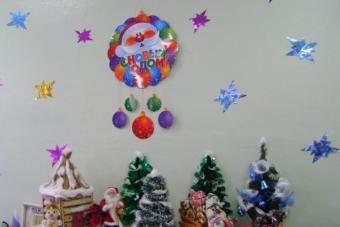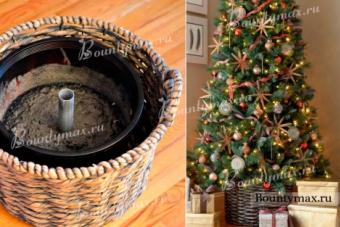Angelica Smolnikova
Soon Easter I propose to make a souvenir
See what a miracle
Did mom put it in the dish?
Here is an egg, but not a simple one:
Gold painted,
Like a bright toy!
There are stripes, curls,
Many little rings
Stars, circles and hearts.
What are all these colors for?
Like a good old fairy tale?
Mom gave everyone the answers:
Easter is the brightest holiday!
And the egg, I know,
A symbol of life on earth! (
We need:
salty dough (you can color, water, brush No. 3, stack, gouache, rolling pin, plungers, chicken egg.
The plunger is an object made of two parts made of plastic - an inner and an outer one. A spring is interconnected between these parts, on which the whole principle of operation is built. Place the plunger on the rolled salt dough, press on it and release the pressure. A spring is triggered and a cut out silhouette remains on your piece of dough, or a drawn image of a flower, heart, star, or something else. And then - a question of fantasy and artistic idea of the future work. It is not difficult to buy them, you can order them in the online store. Plungers are used by pastry chefs to decorate culinary items.

My kids, who are engaged in circle work, like to work with plungers and decorate their crafts on dough plastic. Try it yourself.
Completing of the work:
1. To make a blank, you need a whole eggshell. We make two small holes in the chicken egg and blow out the contents.
2. Roll out long sausages from salted dough and roll them into flat strips with a rolling pin. We wrap these strips around the egg, as shown in the photo. Here, of course, the child will need your help so that when wrapped with a layer of dough, the egg does not crack. You can completely cover the shell with the dough, I decided to make it hollow inside. Using the second option, we leave the foreground of the shell unfilled.


3. Place the egg on the sculpted platform - stand. Our blank is ready.


4. Using plungers, prepare the flowers and place them on the workpiece (so that small parts do not deform when they are attached to the base, moisten the bonding points with a brush dipped in water). We supplement the composition with leaves, it all depends on imagination.


5. Now you need to mold a small figure that will be located inside the egg. It can be chicken, candle, etc.

6. Dry the product. Fashionable at room temperature, or in the oven at about 80 degrees.
7. After the craft has dried, you need to carefully remove the shell from the foreground
8. Place a small figure in the inner part.
9. If you sculpted from unpainted dough, then paint the craft with gouache paints.
10. You can decorate the work with beads, satin ribbons, varnished.

The work is very interesting and not very difficult for children. Be creative, fantasize.
Easter crafts made of salted dough are able to decorate the Easter holiday in the best way, make it warm and joyful. An Easter egg made from salted dough on a stand will best help convey the mood of this wonderful holiday. Crafts from the dough do not take much time to make them, and the pleasure of sculpting and coloring simply cannot be conveyed. The kids are delighted, and so are the parents!
Crafts from salt dough: DIY Easter eggs
The master class of this craft will allow you to cope with the task without difficulty.
You can, of course, roll the whole egg out of the dough. Only it will dry for a very long time, it is quite heavy and can crack and swell when dry. Salted dough gives a good result if its thickness in the product does not exceed 7 cm.
Therefore, it is best to make Easter eggs - dummies on a frame. In this case, the best option is an empty eggshell. To prepare it, you need to make two small holes in a raw egg with a sharp object - you can use a darning needle, you can use the tip of a knife. The inside of the egg is blown onto a plate for use in food later.

Now you should start preparing the mass for modeling. A cup of ordinary flour (without impurities), half a cup of finely ground salt are poured into a bowl, mixed. Little by little water is added to the mixture, and everything is immediately mixed. Then the dough is kneaded on the table. It should have the consistency of dumplings.

An empty shell is placed on a rolled pancake.

Then the whole frame is wrapped in the dough, the seams are smoothed with fingers soaked in water, the surface is leveled by rolling the egg on the table. At one end, a puncture should be made in the dough shell in the place where the shell has a hole, otherwise, during baking, the air that has increased in volume from heating will give an ugly swelling. 
Letters, flowers, berries, leaves are cut out of a thinly rolled piece for modeling mass with a sharp knife - everything that the master's fantasy tells. Having moistened the side of the future bas-relief with water, with which it will be attached to the main part, the sculptor carefully applies the applique in the right place. With fingers dipped in water, carefully smoothes the seams so that there are no cracks.
You can emphasize the border of the bas-relief using a knife. The point should be applied with the flat side - the sharp part should be directed directly to the line where the bas-relief rises above the plane.

You can bake an egg in a conventional oven, but it is preferable to do it in a "microwave". The mode should be set to "defrost", the time is 1 minute. This will be a test firing. To prevent the egg from warping, it is best to put it in a bowl of flour. Then, in the place of contact with the plane, dents are not formed on the egg.
After checking, you can make a putty: fill up the resulting irregularities and cracks with pieces of wet dough. If, nevertheless, swellings have formed, they can still be cut off with a knife or scissors in order to cover the place of "repair" with a wet mass.
Now you can "burn" the egg in the microwave oven in the usual way, but it is better to do it in several steps for 2 minutes, checking the result each time.
After "baking" the egg is painted with watercolors, acrylics or gouache. After drying, you can cover the product with ordinary colorless wood varnish or sprinkle with hairspray.
Modeling on the theme "Easter" involves the implementation of an egg stand. The stand is most conveniently done in three steps. A cup should be formed first. For her, the master can take a plastic cap from an air freshener or dichlorvos. First, it must be greased with oil: petroleum jelly, sunflower, margarine. Then you need to carefully stick it with a thin layer of rolled dough, smooth out the joints. 
Having distributed the dough in an even layer, you need to cut off the excess with scissors. The lid should protrude slightly above the dough. Along the edge of the "glass" it is allowed to make a "roller", you can decorate the stand with a bas-relief.
The "Cup" can now be placed in the oven upside down. After 1 minute of "baking" in the "defrost" mode, the part is removed from the cabinet, and the lid-breadboard can be easily removed. 
The leg is rolled out of a small piece of dough, attached with a moistened end to the bottom of the cup, the place of attachment is smoothed with wet fingers. The part is again placed in the oven, which is switched on for "defrosting". The part should be placed upside down, "bake" for a minute. 
For stability to the leg of the stand, attach a metal cover covered with dough. Do not forget to moisten the attachment point, and gently smooth the seams! It is better to dry the product for the first time upside down. 
After the last baking (at normal temperature), the glass stand is painted with watercolors, gouache or acrylics and varnished.
This decoration can last as long as you like: a year, two or longer. But remember that this product is fragile and should not be dropped. And it is not recommended to wash an egg with a stand with water.
Easter crafts made from salt dough.Equipment:
- bowl oil
- dough rolling pin

1. Mix flour and salt, gradually adding water. The dough must be kneaded until it looks like a dense pastry. Then turn the bowl over and lightly grease the bottom with oil. Place the container itself on an object so that its edges rise above the table. Roll a small ball out of the dough, make a tortilla (basket base) out of it and place on the bottom of an inverted bowl
 2. Make long filaments of 5 mm diameter from the dough. Moisten the outside edge of the dough cake to act as glue. Fix one end of the flagellum on the edge of the cake, place the flagellum itself in the form of a loop, and then attach the other end to the cake. Press down lightly on both ends for better attachment to the base.
2. Make long filaments of 5 mm diameter from the dough. Moisten the outside edge of the dough cake to act as glue. Fix one end of the flagellum on the edge of the cake, place the flagellum itself in the form of a loop, and then attach the other end to the cake. Press down lightly on both ends for better attachment to the base.  3. Moisten the outer surface of the loop and attach another flagellum to it. Make a second double loop. The ends of each eyelet should be in the middle of adjacent eyelets
3. Moisten the outer surface of the loop and attach another flagellum to it. Make a second double loop. The ends of each eyelet should be in the middle of adjacent eyelets  4. After attaching the loops, moisten the base with water and make cuts on it with a knife, so that the ends of the loops better adhere to the base of the basket, and its bottom will be flatter.
4. After attaching the loops, moisten the base with water and make cuts on it with a knife, so that the ends of the loops better adhere to the base of the basket, and its bottom will be flatter.  5. Roll another ball out of the dough and make a cake out of it. Place it over the first base of the basket with the ends of the eyelets attached to it. Press down lightly on the cake to adhere more firmly to the first base
5. Roll another ball out of the dough and make a cake out of it. Place it over the first base of the basket with the ends of the eyelets attached to it. Press down lightly on the cake to adhere more firmly to the first base  6. Preheat the oven to 120 ° C. Bake the basket in the oven (the basket fits there together with the bowl) until the salty dough becomes tough and turns white. Remove the basket from the oven, let it cool, and then carefully remove it from the bowl.
6. Preheat the oven to 120 ° C. Bake the basket in the oven (the basket fits there together with the bowl) until the salty dough becomes tough and turns white. Remove the basket from the oven, let it cool, and then carefully remove it from the bowl. 
Holy Easter is one of the most anticipated holidays of the year. Both adults and children are looking forward to it. And the main reason for this is not only the religious significance of this day, but also the delicious treats that each family prepares on this important day.
We would like to bring to your attention a do-it-yourself master class on making dough crafts for Easter.
Easter basket
To make an Easter basket from yeast dough, you need to take the following baking ingredients:
- fresh yeast - 2.5g
- warm water - 1/2 cup
- milk - 1/2 cup
- eggs - 1-2 pcs (one for dough, one for greasing)
- sugar - 1/4 cup
- salt - 1/2 tsp
- olive oil - 1/4 cup
- flour - 4 cups
With the help of step-by-step photos, it will not be difficult to make such an interesting dough craft for Easter.
Let's start:
1. In a glass container (preferably with deep edges), it is necessary to combine milk with water. Mix two tablespoons of water with milk and add yeast. Stir well and leave to brew for a few minutes.

2. Beat an egg, add the mixture of milk, water and yeast to it, then add olive oil, salt and sugar. Mix thoroughly until smooth.

3. Add flour to the resulting mass. First you need to add half a glass, mix, then gradually add the remaining amount of flour.


5. The next step is to roll the finished dough into rollers. Use heat-resistant glassware or a cake pan as the weaving mold. And before you start applying the dough, you need to wrap it in foil.


7. Apply the resulting strips evenly to the mold, connecting at the top. On average, 14-15 flagella per form are obtained. Now you need to put something heavy and round on top of the harnesses to make the bottom (you can take a glass bowl)


9. In a separate bowl, combine one egg, a tablespoon of milk and a little olive oil. We grease the whole basket of dough with this mixture.
10. Place the basket on a baking sheet covered with parchment paper in an oven preheated to 180-190 degrees. We bake for 20 minutes. The dough should take on a golden brownish appearance.

11. When you take the basket out of the oven and remove it from the baking sheet, a trace of dough and dishes will remain on the paper. A pigtail of the same size should be made on it. This will be the border for our Easter basket. To make a handle, you need a wire. We measure the desired length, wrap the wire with foil, and on top with dough.

12. Do not wait for the dough to rise, but immediately put it in the oven.
13. Attach the finished edging with toothpicks, insert the handle in the same way.

The Easter basket is ready! Now you can decorate it with a napkin, ribbons and put Easter cakes and other Easter treats in it.
Crafts for Easter from salted dough: eggs-krashanki
To prepare these crafts, you need to take the following ingredients:

- flour - 2 cups
- salt - 1 glass
- water - 1 glass
- acrylic paints or gouache
- egg-shaped mold
- brushes for ornament decoration
- hanging tape
If you don't have a suitable mold, you can easily make one yourself. You need to cut a strip from a plastic bottle and fasten it with tape, giving it an egg shape.

Let's start making crafts from the dough, the photos will help us with this:
1. In a deep bowl (bowl) mix salt, water and flour, knead the dough.
2. Roll out the resulting salted dough 1-1.5 cm thick.
3. With the help of egg-shaped molds we "squeeze out" eggs from our dough.
4. Using a rod from an old felt-tip pen or a pen, make holes for the tape in the resulting molds.
5. Put the resulting eggs from the dough on a baking sheet covered with parchment paper for quick drying. We put in the oven on a very low heat, do not forget to leave it ajar so that the blanks do not bubble.
6. After the crafts have dried and cooled down, paint them as you wish. Leave to dry.
7. We take a long ribbon of red or white colors - symbols of Easter, and thread it through the holes in our dye eggs.

We have got a wonderful craft from salted dough for Easter in the form of a garland.




